Increased sedentary jobs and sitting time can lead to muscle imbalances and weak core musculature, putting the low back at increased risk of injury. Here are a few common reasons increased sitting time leads to LBP:
- The deep core muscles are meant to endure prolonged contractions to support and stabilize the spine. When we slouch in a chair all day, the core remains relatively inactive. This results in a decreased signal from the brain to the core telling it to “turn on” and protect the spine when necessary.
- The psoas major, one of the strongest hip flexors, originates at the lumbar spine. Sitting can shorten this muscle, putting chronic stress on the low back.
- The gluteal muscles, which are the powerful hip extensors, become lengthened and weak, known as “glute amnesia.” These muscles are then unable to do their job in regular activities of daily living, forcing other muscles, such as those in the low back, to compensate.
Plank
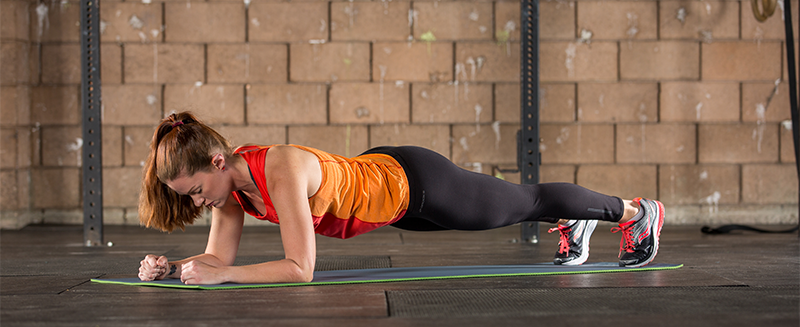
Tried and true, nothing enhances core stability like a plank. Start with your elbows positioned directly below your shoulders and walk the feet back one at a time until the body is in a straight line. Engage the quads, glutes and core, while pushing the floor away through the toes and forearms. Perform one to three sets for 30-60 seconds, or as long as you can maintain proper form.
Ramp it Up: To increase the challenge, find an unstable surface. This can be done by placing the forearms or feet on a soft pad or exercise ball, or by raising one arm or leg. Your hips and shoulders should remain in line with one another throughout.
Pare it Down: Decrease the challenge by elevating the surface. Position the hands or forearms on a bench, table or railing at a height that is challenging but allows for maintenance of proper form.
Side Plank
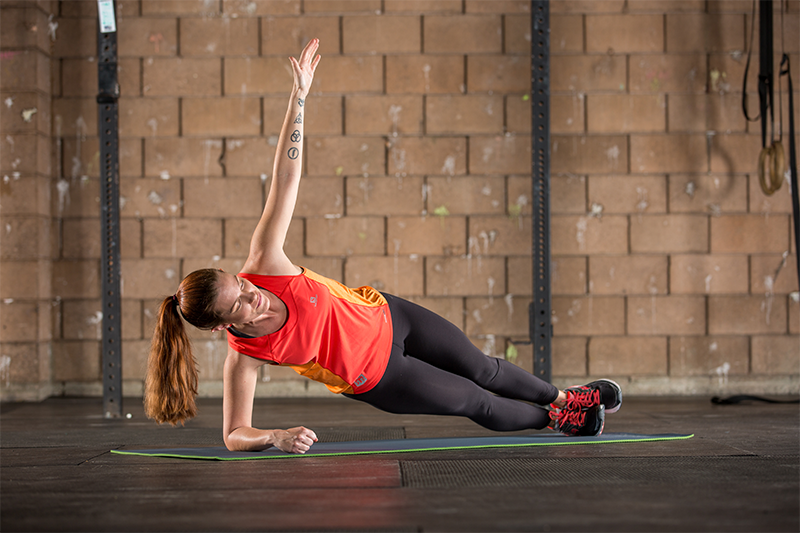
While the standard plank is helpful for reducing the risk of LBP, the side plank may be even more beneficial because it requires activation of the internal and external obliques. It’s imperative to strengthen these muscles, as they help control rotational movements of the spine. Start with your elbow positioned directly below your shoulder. With the feet stacked or staggered, drive up through the lower obliques until the body is in a straight line. Keep the shoulders and hips stacked. Perform one to three sets for 30-60 seconds, or as long as you can maintain proper form.
Pare it Down: Drop a knee to the floor for additional support or find an elevated surface to place the hand or forearm, reducing the challenge on the core.
Back Extension
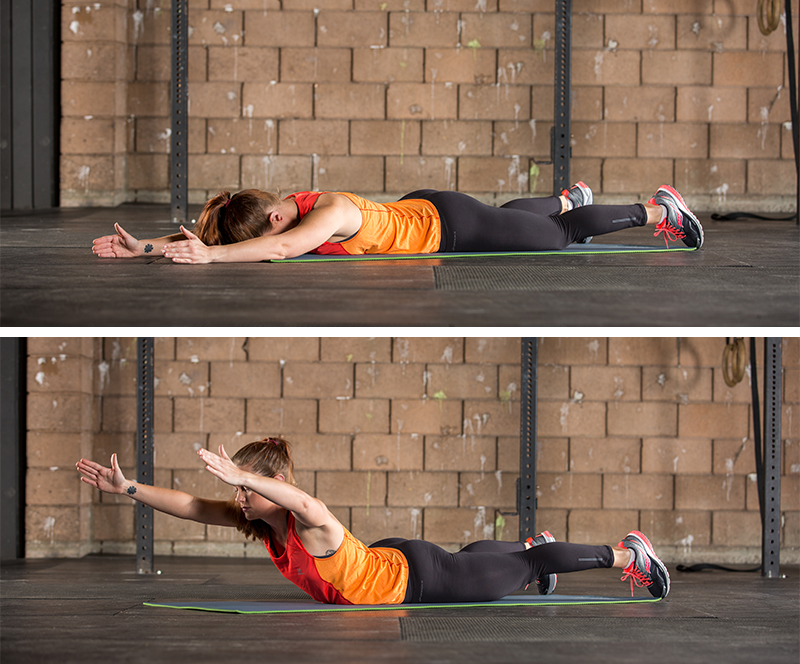
Think of the core as a box. To prevent LBP, all sides of the box need to be strong and stable. Back extensions help strengthen the often-overlooked posterior side. With your lower body supported on a table or tall bench, let the upper body hang toward the floor (you will need a partner or strap to anchor your legs to the table). Engage your entire core and extend your upper body until it’s in line with your legs. Be sure to avoid extending past 180 degrees (where the upper body is higher than the legs) to limit compressive forces on the lumbar spine. Lower slowly and repeat for one to three sets of 10-15 repetitions.
Ramp it Up: Increase the challenge by making this an isometric exercise. Hold the top position for 30-60 seconds, or as long as you can maintain proper form.
Supine Gluteal Bridge
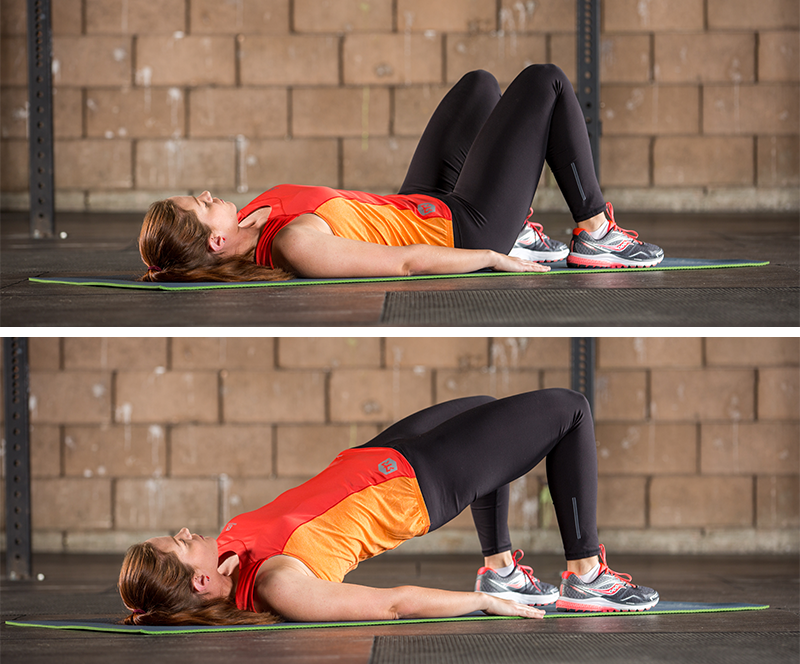
Weak gluteal muscles contribute to LBP by passing their work to the low back. The powerful gluteal muscles support activities like walking, running, squatting and deadlifting, but when they lack sufficient strength, the back bares the brunt of the load. Start in a sit-up position with your arms down by your sides. Press firmly through your feet and engage your glutes to lift up the hips, creating a straight line from the heels to the shoulders. Hold for two seconds and lower slowly. Perform one to three sets of 10-15 repetitions.
Ramp it Up: Increase the challenge by performing this exercise with a single leg, while maintaining level hips.
Bird Dog
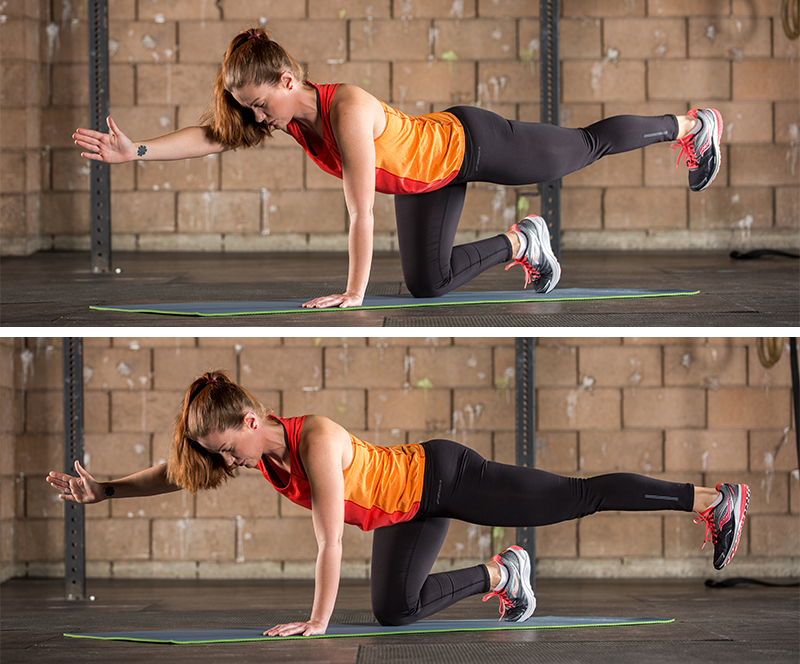
You’ve likely seen this exercise performed at the gym. And it’s probably been done incorrectly. To perform properly, the trunk should remain stable, while the arms and legs move.
Begin in a quadruped position with your core engaged. Slowly raise one arm and the opposite leg to torso height. Your hips and shoulders should continue facing the floor. Slowly lower and repeat for 10-15 repetitions or hold the top position for 15-30 seconds. Repeat one to three times on each side.
Ramp it Up: Instead of the typical flexion and extension seen with this move, try a lateral bird dog. Once you reach the top position with the arm and leg extended, move both appendages a few inches laterally. This will dramatically increase the core challenge. Slowly return to the extended position and repeat for one to three sets of 10-15 repetitions.
Low-back pain is a common and debilitating condition. With a proper routine, you can strengthen your core and gluteal muscles and reduce your injury risk. This workout can be performed with nothing but your body weight—at home, in the gym or at the office. To further protect your low back, maintain an upright, engaged posture while on the job and avoid staying in any one position for too long.
No comments:
Post a Comment